Recently, I had the pleasure of visiting my good friends Jeff, Rich, and Rob at the Greene Street Joinery in Port Monmouth, NJ for a shop tour of their work space. This group of guys are not only tremendous woodworkers, but also have a strategically crafted set-up that had the wheels turning in my head about how I could improve the workflow of my recently expanded woodworking shop. Jeff is as articulate as he is passionate about craftsmanship, and did a wonderful job of breaking down the layout of their shop on my Youtube channel. This shop is utilized for a vast number of woodworking projects, from the design phase through the building of custom furniture and cabinetry.
Here are some of the notable things that make up the Greene Street Joinery woodworking shop:
Exterior Wood Storage in the Wood Shed
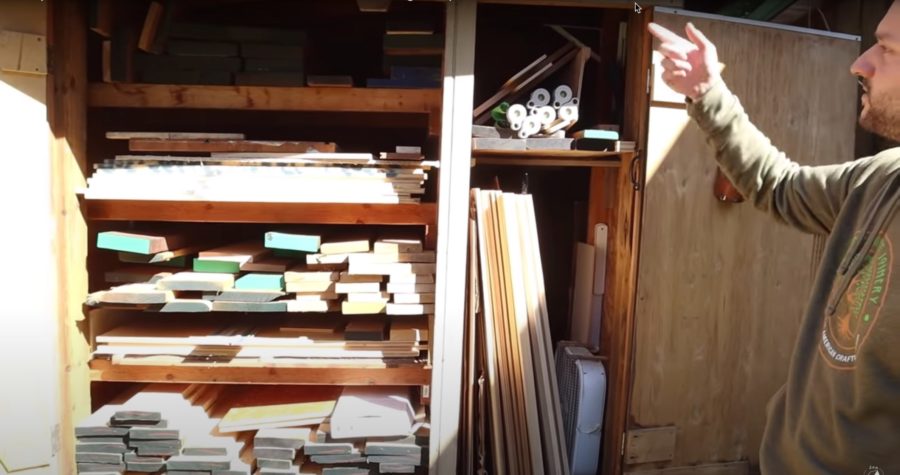
For those of you wondering how to store wood, Greene St. utilizes an external wood shed directly outside of their shop to store their materials. Their shed contains a great variety of lumber, including eight quarter cherry, plywood, maple wood, and others that are ready to go whenever they are ready to use it.
Breaking Down the Lumber with a Hitachi Chop Saw
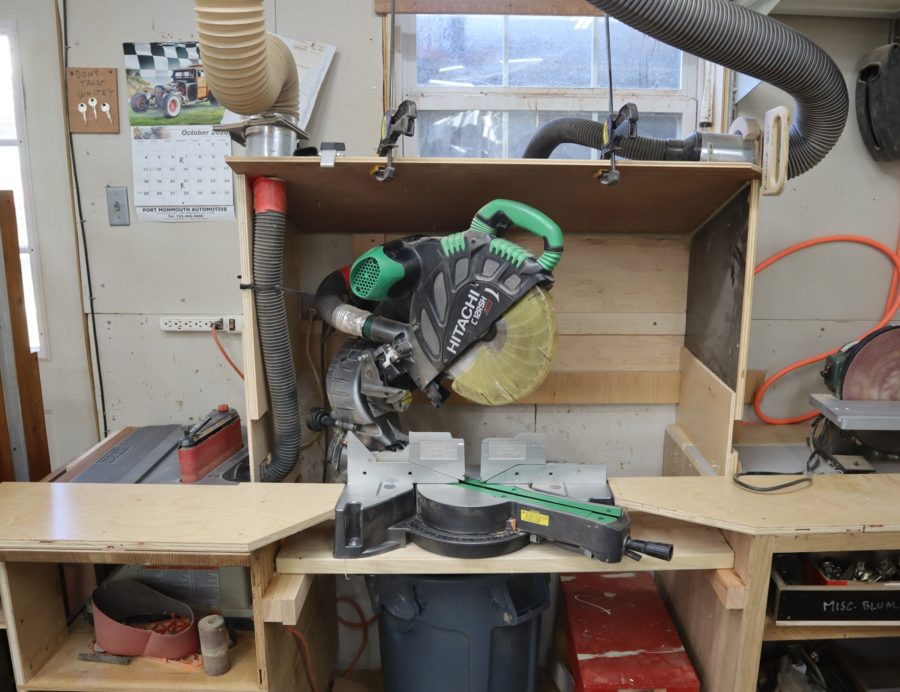
Once a piece of lumber is grabbed from the wood shed, typically the next step is to break down the lumber with their 12 inch Hitachi chop saw. The tube seen above the chop saw is there for dust collection in order to keep dust in the shop to the bare minimum and the blast gates easily accessible.
Face Jointing the Boards with an Oliver 4240 Jointer
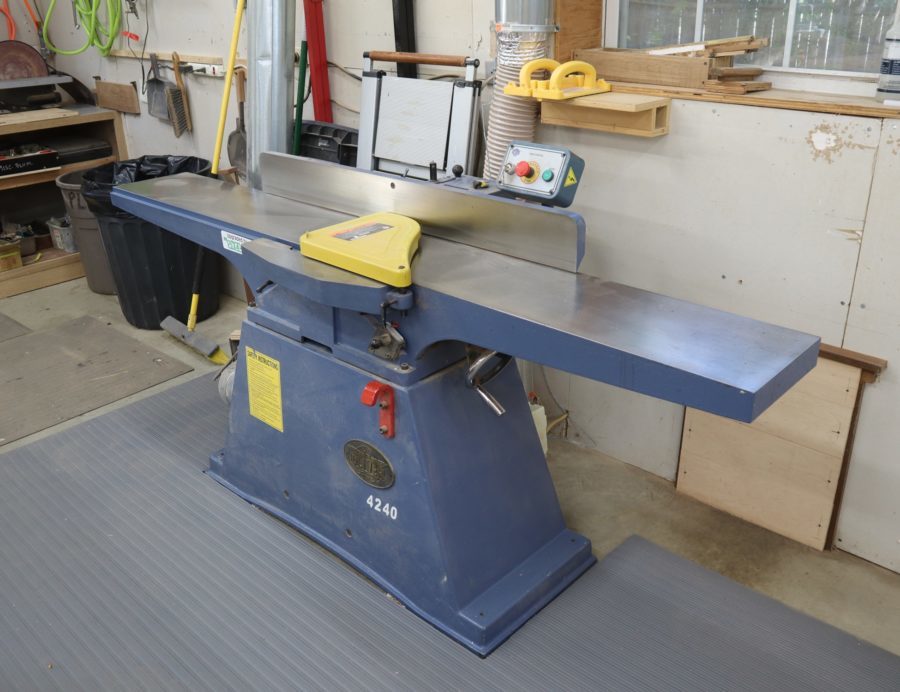 Upon the completion of breaking down the lumber, the wood is quickly taken over to the Oliver 4240 jointer, upgraded with a Shelix spiral cutter head. They opted for this upgrade to take advantage of , “the series of small carbide cutters [which are] much quieter and cleaner than straight blades.” This makes it easy for the Greene St. crew to face joint the boards.
Upon the completion of breaking down the lumber, the wood is quickly taken over to the Oliver 4240 jointer, upgraded with a Shelix spiral cutter head. They opted for this upgrade to take advantage of , “the series of small carbide cutters [which are] much quieter and cleaner than straight blades.” This makes it easy for the Greene St. crew to face joint the boards.
YorkCraft Woodworking Planer
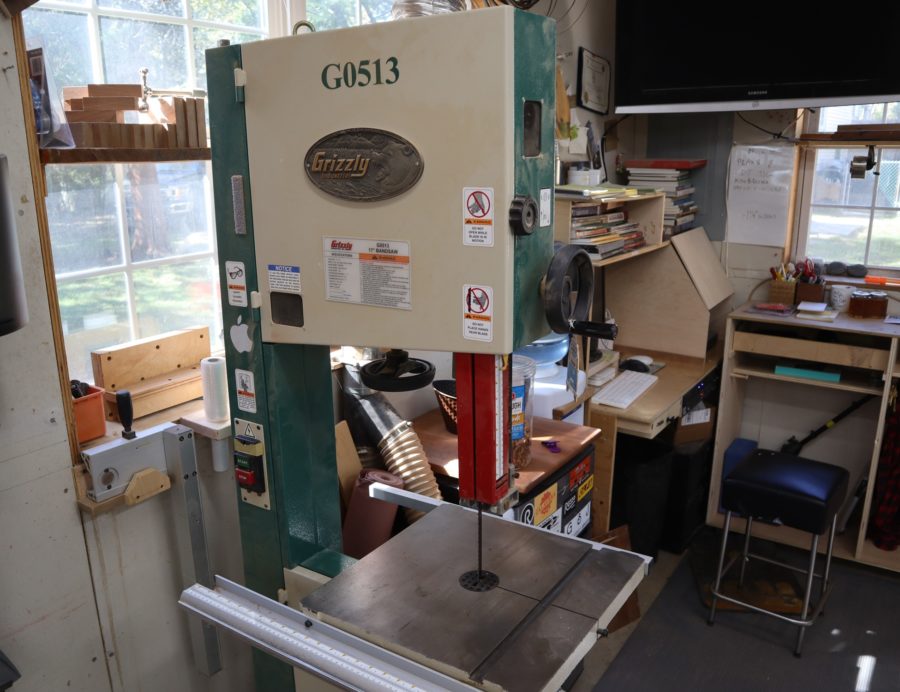
After the board faces are jointed, the next step is to bring the piece of wood over to the planer. At Greene St, they utilize a YorkCraft 20 inch Planer. This model is a standard 4 post planer with a lux cut spiral cutter head, and is notably in the shop because it not only leaves a great finish, but is quiet as well. When they’re done with the planer, they head back over the jointer to joint the edges, before heading over to the industrial cabinet saw.
Using the SawStop Industrial Cabinet Saw:
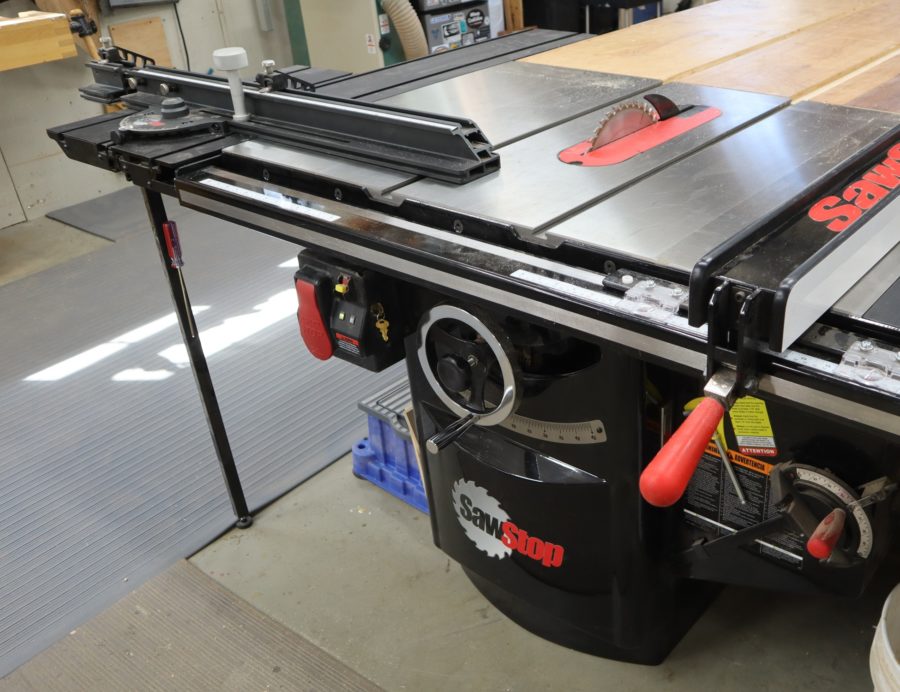
You could feel the excitement in Jeff’s voice as he talked about their newest and favorite tool in the shop, the 3 horsepower industrial SawStop cabinet saw with 220 electrical power. With the constant ripping of hard wood, Jeff commended the SawStop for being safe, strong, and quiet. This model comes with a cross cut fence, giving them the capability to cross cut up to 39 inches. Typically, the cross cut fence comes in handy when cutting door materials and plywood to size.
When I picked Jeff’s brain later on as to why he chose the SawStop, he really doubled down on the items’ safety feature. Additionally, he noted the sliding table was an important factor, due to the ease of cross cutting. A huge upgrade from their previous model, the ball-bearing table slides so smoothly, even full of dust, which makes a world of a difference and delivers a super high-quality finish.
Closeby, they have another table saw, the 3 horsepower delta unisaw which runs a dedicated ridge carbide super dado master. The dadosaw is utilized for the building of every door at Greene Street, so Jeff doubled down on the importance of having a high-quality saw and dado blade.
Peripheral Tools & Clamps
Greene Street uses an array of peripheral tools. One of Jeff’s favorites is a Woodmaster 38 inch double drum master, a finicky but great tool made in the USA that is perfect for bringing the wood to a consistent thickness. This particular model comes with two drums, 100 and 120 grit.
Jeff’s bench is strategically placed next to the clamp collection, an eclectic batch of large and small bessies, 24s, 30s, as well as some Jorgensens.
Interior Wood Storage
Also next to Jeff’s bench is additional wood storage, mostly to allow the Greene Street crew to bring items in and season them with proper humidity before use. Air conditioning in the winter and heating in the summer ensure that the wood maintains proper form upon the completion of the project.
Drill Press
Over near Rich’s bench, he has direct access to the drill press, which, despite not being used all that often by the crew, really comes in handy for drilling nice straight holes and finished pieces, as well as cutting plugs.
Bandsaw
The Greene Street guys have a lot of admiration for their 17 inch grizzly bandsaw, which is used for resawing, cutting curves, and a great deal of jig making.
Sketch-Up & Fusion360
While not physical woodworking tools, Jeff doubles down on where the Greene Street magic gets going, their Mac computers. Sketch-Up & Fusion360 are their go to design software platforms. A large chunk of the teams’ time is spent drawing on their personal computers, and a desktop with a large TV attachment is kept in the shop as a means to easily access the project drawings.
Sanding Cart
Jeff recently handcrafted a beautiful sanding cart. Inside they store a FEIN Turbo II as their main vacuum for sanding. Inside of the drawers, they hold onto all of their Mirka Novastar sandpaper discs. This particular kind of sandpaper comes with a nice plastic backing that makes it less likely to rip when using the orbital sanders stored on the other side of the cart. In this shop they use 100 and 120 grit paper, which is run through a drum sander. In the drawer below, they also hang on to some hand sandpaper as well.
Smaller Tools of Interest:
While these tools aren’t massive in size, there were plenty of smaller items Jeff made note of that they use in the shop constantly:
Lie-Nielsen Block Plane
Jeff uses his Lie-Nielsen block plane on a daily basis. This small inch and half blade comes in handy when breaking and cleaning up edges. This product is about $125 dollars, and the quality and sleek bronze makes it well worth it.
Lie-Nielsen Medium Shoulder Plane
When building doors, the larger Lie-Nielsen shoulder plane comes in handy. They tend to leave the fit tight on the tendons of their doors and fine tune them with this tool.
Bosch 12 Volt Drill
All 3 guys keep a Bosch 12 Volt drill and a driver at their station with fuller bits and snappy bit-holders.
18 Volt Makita
For larger bits and drilling with a whole saw not at a drill press, the 18 Volt Makita is the way to go.
Makita Dual 18 Volt Track Saw
Because the crew only has a 39 inch cross cut capacity on the saw, they’ll often break down sheets before they come in the shop to make things a little more manageable. Despite having had a Festool previously, he much prefers the Makita Dual 18 Volt Track Saw because its cordless and also has significantly more power. WIth a 55 inch track and a 110 inch track, Jeff and the team can make a nice straight edge on a piece of plywood.
Other Notable Insights About the Green Street Joinery Shop:
The Size of the Woodworking Shop
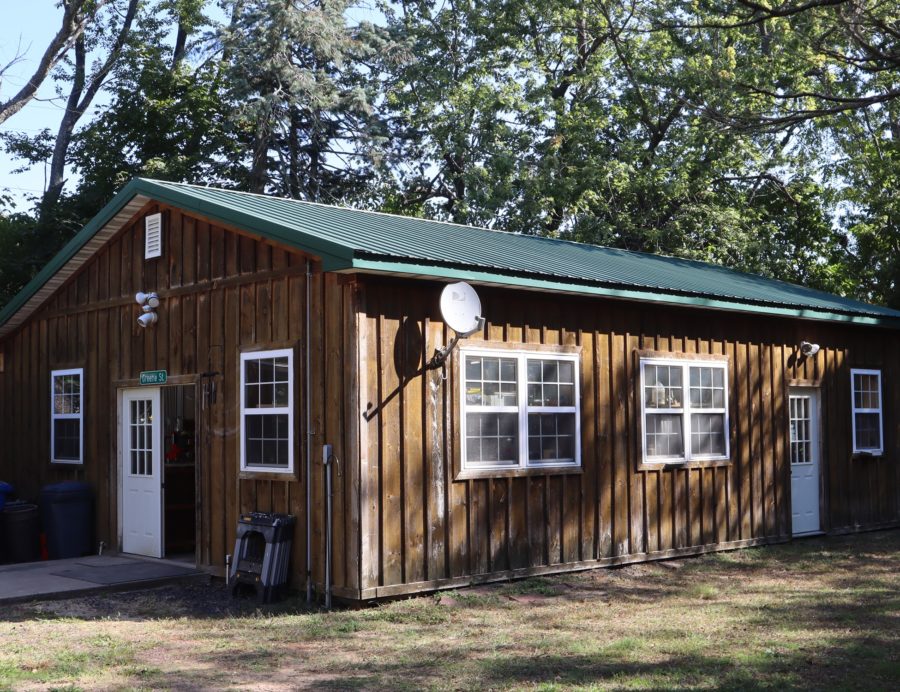
The shop is just under 900 square feet, with the exterior dimensions of the building being 24×36. Personally, I feel that this is a great size for a wood shop, as clearly exhibited by Jeff’s breakdown of all the high-quality woodworking tools they’re able to fit inside.
That being said, there’s definitely a strategy that goes into the layout of the shop. “We’re in a constant battle of pairing down what we do have and trying to choose what’s going to serve us best.” One example of how the size of the shop comes into play is with the SawStop cabinet saw. While I wouldn’t even be able to fit their super-modern machine in my shop, Jeff mentioned that they were considering an even larger model that unfortunately ended up being a no go as a result of the amount of space it would take up.
Strategically Designed Duck Work for Dust Collection
The guys had a lot of forethought and opted to run duck work before the slab was put down in the building, since the building is an amish pole barn strategically designed to be a woodworking shop.
Dust is collected beneath the table saw above and runs through the duck work all the way over to their dust collector, which is stored in a separate room in the back. Having the storage beneath the table is a much more efficient methodology than having dust collection run through the ceiling.


